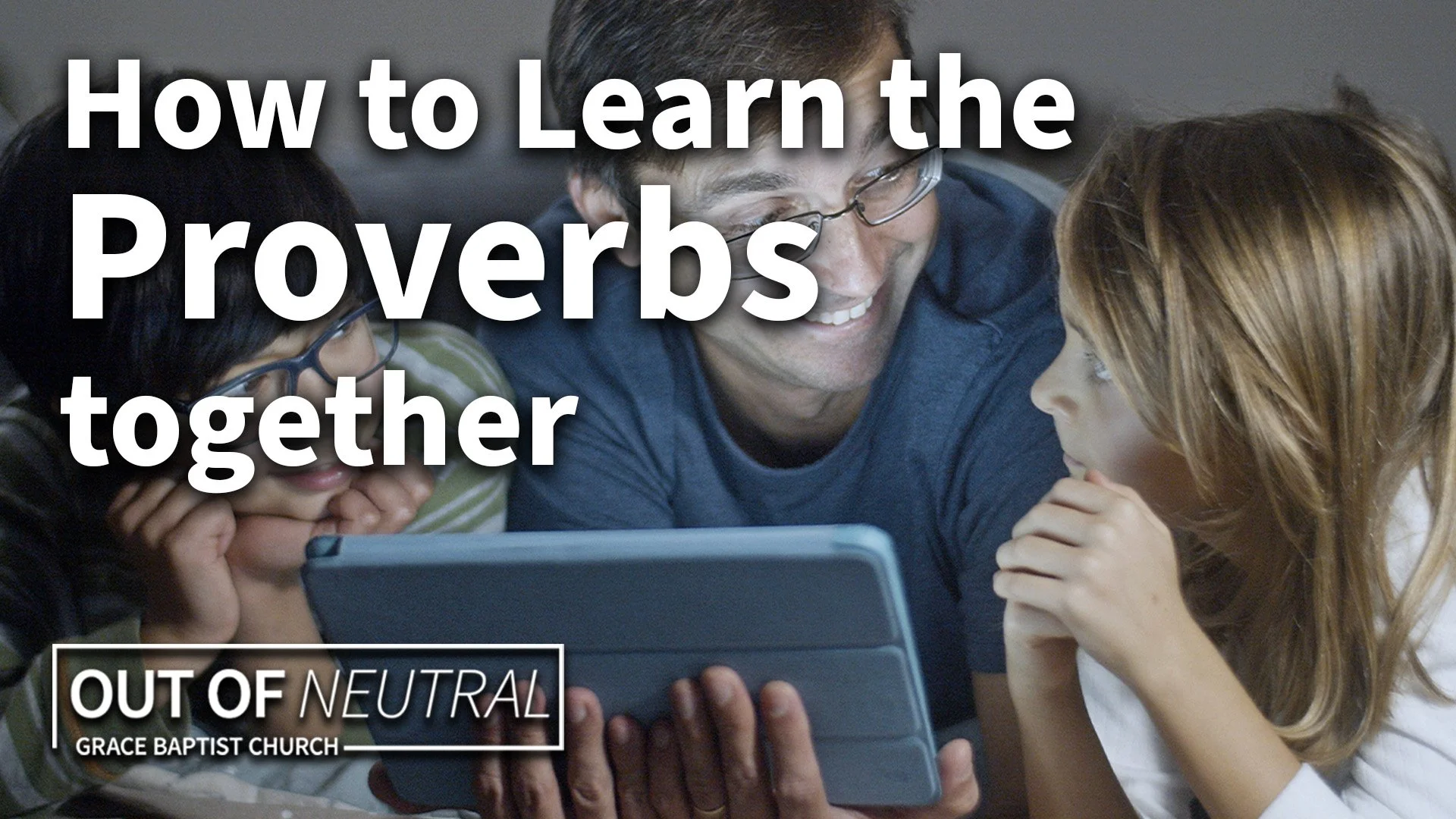Last time I talked about the importance of learning Proverbs with your children. I love the way they minister to the whole family and shift the dynamic of parenting from just a parent trying to pass along their of doing things to, instead, a parent modeling and coaching a child in a life committed to God and His wisdom. The problem remains though: how do you teach them? Because there are thirty-one chapters, many advocate reading a chapter every day of the month. There’s probably value in that practice, but with younger children, I’m convinced that less is more. Our family typically focused on one new proverb at a time and reviewed no more than five others. Let me share a few of the things that helped us.
1. Teach proverbs with songs
I’m not a poet or a musician. And I’ve never been accused of being a great singer. But I have done with proverbs what I’ve done with all kinds of verses from all over the Bible – I’ve put them to song. I didn’t dream up any complicated melodies, but I just repeated the proverb a few times in my head and thought of a melody from a song I knew that might fit. If you can fit the Bible reference into the song all the better! The songs I chose were as varied as my musical tastes. But by borrowing the melody, I could just write the song title on the 3 x 5” card where I had written the verse and I could easily review it. I can still remember singing Proverbs 12:15 as a family:
The way of a fool is right in his own eyes, but a wise man listens to advice.
It reminds me of a time when instilling the importance of taking, rather than resisting, direction was a major challenge in our parenting. I’m grateful for the help of God’s Word.
2. Teach proverbs with stories
As people get older we tend to gravitate to more nuanced plot lines. But children love stories that are more obvious with “good guys” and “bad guys.” I think that the Book of Proverbs deliberately takes advantage of this and presents truth using obvious characters like “the wise” and “the righteous” on one hand, and “the fool,” “the sluggard,” and “the mocker” on the other. Taking these biblical characters, assigning names to them, and telling a simple story to communicate the truth of a particular proverb is simple enough for anyone to do. How much imagination does it take to tell a short (and very memorable!) story about Proverbs 25:16?
If you have found honey, eat only enough for you, lest you have your fill of it and vomit it.
“Daddy Tales,” as I used to call them, were a highlight of our devotional life as a family when the children were smaller. At a certain point, I recorded many of the songs and stories for the children to listen to on their own.
3. Teach proverbs with puppets
A related tool to storytelling is the use of puppets. Part of the challenge of teaching young children is their hunger for the visual when you’re just delivering words. We faced that 20 years ago before the advent of iPads and smartphones, and it’s only gotten harder. One of the things that really helped us was keeping a basket of puppets next to the dinner table. The puppets gave me a cast of ready-made characters to act out various roles in stories or discussions of verses. Minnie Mouse, for instance, got called upon to play the woman of Proverbs 11:22 along with a puppet we called Darren Dragon who was learning discernment from the verse.
Like a gold ring in a pig's snout is a beautiful woman without discretion.
The verse on its own is vivid and memorable, but with the puppets, it captures a child’s imagination.
4. Teach proverbs with crayons
The last trick for teaching proverbs to your children is crayons. We used crayons in the Book of Proverbs and all over the rest of the Bible as well. Instead of just reading a proverb or a Bible story, I would draw a picture as I read it. Full disclosure: my drawing isn’t any better than my singing! My kids could listen better if they could picture what I was saying and to make it more fun, we made sure everyone had paper and crayons to follow along. After a while, we got more environmentally friendly and everyone had their own whiteboard. You can tell a child to avoid getting too close to the line of temptation, but how much more powerful to draw a picture of Proverbs 6:27?
Can a man carry fire next to his chest and his clothes not be burned?
With Proverbs, you can even have everyone separately draw their own picture of the verse and explain it to the family when they’re done.
You may come up with other strategies to learn proverbs with your children. That’s great – the best method of teaching your children the Bible is the one you actually use. Just do it!
In awe of Him,
Paul













